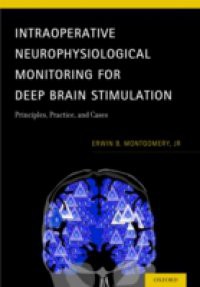A thorough understanding of electricity, electronics, biophysics, neurophysiology, and neuroanatomy is important to render more tractable, and otherwise complex, electrophysiologically-based targeting in the brain during operative manipulations. Most importantly, electrophysiological monitoring requires controlling the movement of electrons in electronic circuits in order to prevent irreversible damage. This new textbook presents a fundamental discussion of electrons, the forces moving these electrons, and the electrical circuits controlling these forces. The forces that allow recording and analysis also permeate the environment producing interference, such as noise and artifacts. Intraoperative Neurophysiological Monitoring for Deep Brain Stimulation discusses how to avoid or suppress noise and artifacts for the most successful surgical outcome.






 9.29 (242)
9.29 (242) 













